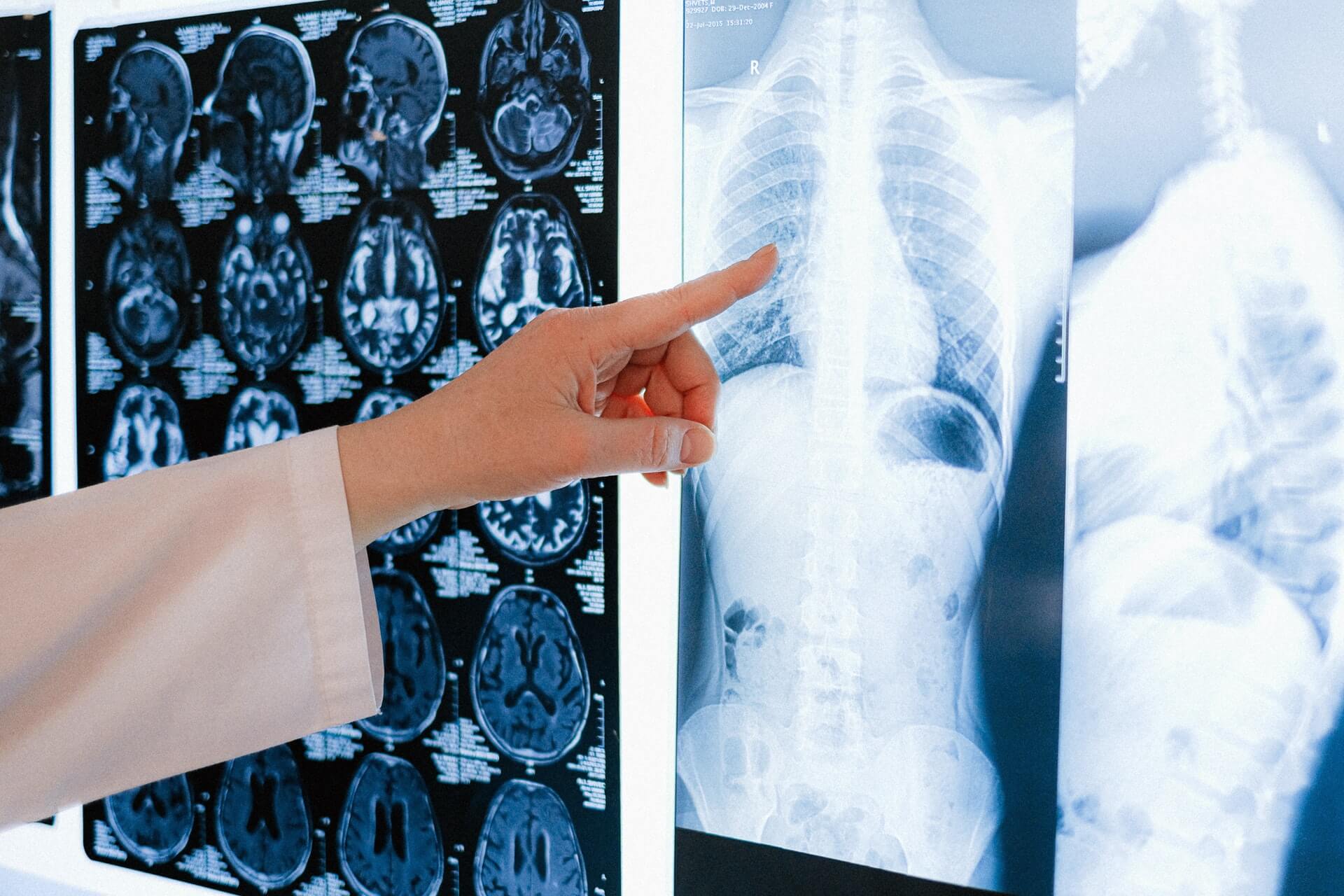If you're reading this, chances are you're asking the following question: is degenerative disc disease a disability?
If you are unable to work because of degenerative disc disease, you may be eligible to receive Social Security disability benefits. Social Security Disability Insurance (SSDI) pays benefits to the disabled individual and certain dependents in his or her family.
During the application process, the Social Security Administration (SSA) collects a large amount of information, including medical records, in order to determine whether or not you do indeed meet the Social Security administration’s disability definition and are eligible to receive monthly benefits.
Degenerative disc disease (DDD) is one of the spine conditions that qualifies for disability benefits. In order to qualify for disability benefits with degenerative disc disease, your condition needs to meet the criteria laid out in the Social Security Administration's Blue Book listing. You must also have worked long enough to earn enough credit and has paid in the required amount taxes to Social Security. The first six months you are out of work are not eligible for payments.
Is Degenerative Disc Disease a Disability?
So, is degenerative disc disease a disability? Degenerative disc disease in itself is not considered a disability by the SSA. However, if your degenerative disc disease (DDD) has caused other physical ailments that are so severe that you will be out of work for at least 12 months, the SSA will consider you disabled and you will be able to qualify for Social Security disability.
When you submit your application for disability benefits the Social Security Administration (SSA) will want to see sufficient evidence proving your degenerative disc disease (DDD) is severe and prevents you from working. This information includes medical records showing your diagnosis and treatment received. The SSA uses information provided in its Blue Book under the listing 1.04 where degenerative disc disorder is considered a spine disorder making it easier to qualify for disability benefits. It states that degenerative disc disease (DDD) results in a compromised nerve root of the spinal cord which can cause spinal pain, limited spinal movement, limited motor function and muscle weakness, and a loss of touch and reflexes.
There are other examples of degenerative disc disease (DDD). These include spinal arachnoiditis, an inflammation of one of the membranes surrounding the nervous system and lumbar spinal stenosis, which results in pseudo claudication which is when the spaces between the vertebrae narrow causing weakness and chronic pain leading to the inability to move properly.
As well as providing medical evidence another doctor may be asked by the SSA to determine if your degenerative disc disease (DDD) has advanced enough that it prevents you from working and taking part in everyday activities. With degenerative disc disease the chances are that you are unable to stand, walk, lift, or bend in the same way as before your degenerative disc disease diagnosis.
The Financial Costs of Degenerative Disc Disease
Just like any other disability, degenerative disc disease (DDD)can be a very expensive medical problem. If you have health insurance, you will be billed copays for doctor’s visits and prescription copays as well as any deductibles and co-insurance costs. While insurance covers many treatments for the disease, there are some treatments that may be excluded.
If you do not have health insurance, you can expect to pay a lot out of pocket, such as $200 for hot or cold packs and non-steroidal anti-inflammatory medication prescriptions. Physical therapy can cost $50 to $350 per sessions running up to thousands of dollars. Surgery can cost anywhere from $20,000 to $150,000 with a microdiscectomy or discectomy being the least expensive and spinal fusion costing the most.
Additional medical appliances may be required. Canes range from $25 to $100 and walkers can be more than $200. Back braces or corsets are $200 or more. While initial treatment may start with your primary care provider, you will most likely be referred to a specialist, such as a neurosurgeon or orthopedic specialist.
With insurance, you can still end up paying tens of thousands of dollars out of pocket in the long-term. Without insurance, you could end up paying hundreds of thousands of dollars for medical treatment.
These expenses do not include the money lost from missing work or the inability to work. The loss of income will make a significant impact on your financial situation, only making your financial matters worse than before.

Can I Get Disability with Degenerative Disc Disease?
If you are no longer able to work because you have been diagnosed with degenerative disc disease (DDD), you may be eligible to receive Social Security disability benefits (SSDI) provided by the Social Security Administration (SSA) if you have paid sufficient Social Security taxes which has allowed you to accrue sufficient social security credits.
However, there are other conditions you need to meet before you can submit an application for disability benefits. One of these is you need to be able to prove your degenerative disc disease (DDD) will prevent you from working for at least 12 months. Secondly, your condition needs to be able to meet any of the blue book listings for musculoskeletal diseases.
It states that your degenerative disc disorder needs to have caused a compromised nerve root of the spinal cord or you need to provide proof that the root compression causes spinal pain, restricted spinal movement, a reduction in motor function and muscle weakness including loss of reflexes and touch. Other requirements are the presence of spinal arachnoiditis which causes inflammation of one of the nervous system’s membranes which means you need to reposition yourself at least every two hours.
If you can match your condition with one of the musculoskeletal diseases listings in the blue book and you have sufficient work credits to get disability with degenerative disc disease you may submit an application for SSDI. The number of work credits you require to qualify for degenerative disc disease disability benefits is dependent on your age. The younger you are, the fewer work credits you require.
What Qualifies For Disability? The SSA Evaluation and Its Medical Qualifications
There are strict guidelines that the Social Security Administration follows to determine whether someone is disabled or not, and if they qualify for disability benefits. There is step-by-step process revolving around five questions.
This process involves acquiring your medical records to determine your actual diagnosis and the prognosis of your medical issues. A list is kept of the major body systems, and for each system there is a list of medical conditions that are so severe they can qualify for disability.
The Social Security definition of disability differs from the definition under other programs. Social Security will only pay for complete, total disability and not for short-term disability or partial disability. Disability, according to Social Security, is based “on your inability to work”.
The disability determination team will check to see that you cannot do the work you did before, check to see if your medical condition prevents you from adjusting to other kinds of work. They will also check if your disability has already lasted a year or longer, or if it is expected to last more than a year and/or result in death.
The SSA uses a medical guide for determining what classifies as a full and permanent disability. According to the Blue Book, there are specifications on how degenerative disc disorder (classified as a spine disorder listed under section 1.04) will most easily qualify. It states that degenerative disc disease / disorder results in a compromised nerve root of the spinal cord or one of the following specifications:
- Evidence of root compressions that cause spinal pain, limited spinal movement, limited motor function and muscle weakness, and a loss of touch and reflexes.
- OR
- Spinal arachnoiditis (an inflammation of one of the membranes around the nervous system), which has been confirmed by an operative note, pathology report of tissue biopsy or some other laboratory testing and it results in the need to readjust your posture or positioning at least every two hours.
- OR
- Lumbar spinal stenosis resulting in pseudoclaudication (when the spaces between the vertebrae narrow), which is confirmed by medical testing, weakness and chronic pain that results in the inability to move properly.
Qualifying for Disability Without a Blue Book Listing Using RFC For Those With Degenerative Disc Disease:
If your disability is not listed in the Blue Book listings of approved disabilities, you could still be eligible for disability benefits. The severity of your medical conditions is considered as are your age, your education, any of your skills that can be transferred to another job and any past work experience that you may have.
If you have more education and more transferable skills, Disability Determination Services is more likely to believe there is a job that you can still do even if it is not work you have previously done. This where the RFC can come in handy and can help you win your claim.
The RFC, also known as the residual capacity functional assessment, is a form that doctors complete about a patient showing what they can or cannot do. One of these forms completed by your doctor can greatly increase your chances of receiving benefits. These forms are very detailed, indicating how long you can stand and sit, how much you can lift, how often you can bend and how often you can lift your hands over your head.

Retrolisthesis and Disability Benefits
Retrolisthesis is a condition that is often found alongside degenerative disc disease. Retrolisthesis refers to vertebra that has slipped backwards in relation to the vertebra above and/or below. It is possible to find retrolisthesis in the lower back, but it is most often found in the neck area. It is a relatively uncommon occurrence, but scientists believe that a degenerative spinal problem can contribute to the issue.
There are 3 different forms of retrolistheses. The vertebra can either move backward in relation to the one above it, backward in relation to the one below it or it can be in state called staircase retrolisthesis. Staircase retrolistheses is a state where the vertebra is backward from the ones above it, but ahead of the ones below it.
Retrolisthesis is a condition that can have symptoms that make it impossible to work. You may be dealing with significant discomfort or pain in the back which limits your range of motion. If this is the case, make sure to you have documentation of the displaced vertebra as well as documentation of your degenerative disc disease. As part of the evidence for your degenerative disc claim, you will likely already have an X-ray taken. This will be important in noticing the existence of retrolisthesis.
How to Apply Specific Medical Tests When Qualifying For Disability With Degenerative Disc Disease
Although Social Security will have access to your medical records, it is not uncommon for them to order an examination by a different doctor. The Social Security Administration will cover the cost of this exam. These consultative exams are not for medical treatment but to determine whether or not your claims regarding your limitations and conditions are accurate. These exams may include blood work or X-rays.
In this particular situation, the doctor will be checking to determine that your degenerative disc disease is far enough advanced that it does prevent you from working and doing the things that you used to do. You can still be determined disabled even if you make it to this advanced stage of the evaluation and determination process. With degenerative disc disease, odds are that you cannot stand, walk, lift or bend nearly as frequently as you did before the disease impacted your life.

Fibromyalgia and Degenerative Disc Disease
Another condition that might be found alongside degenerative disc disease is Fibromyalgia. Fibromyalgia can lead to a loss in muscle strength. This lack of strength in the muscles surrounding the spine can play a part in causing degenerative disc disease.
It is hard to qualify for disability benefits with fibromyalgia alone. Diagnosing fibromyalgia is difficult because there are no definitive tests to use as evidence. The diagnosis process generally involves a doctor ruling out other conditions and leaving just fibromyalgia. If you are applying for disability benefits with fibromyalgia, you should make sure that you have been checked for degenerative disc disease first.
Degenerative Disc Disease For Veterans
Is degenerative disc disease a disability for veterans?
If you are a veteran who has been diagnosed with degenerative disc disease, you are able to apply for disability benefits even if you are already receiving VA benefits. In fact, going through the process of getting a disability rating from the VA can help with your application.
For both sets of benefits, you will need to provide medical evidence that you do have degenerative disc disease. Degenerative disc disease is often something that is hereditary and progresses over a long period of time. However, if you can prove that your degenerative disc disease was connected to your military service, you will receive a disability rating from the VA.
All of the medical documentation that you have gathered for your VA disability rating can be used as evidence in your SSDI application.
You Could Earn Up to $3,822 Per Month! Get a Free Case Evaluation
Since degenerative disc disease can qualify for SSD benefits in several ways, you must work cooperatively with your doctor to ensure your documentation satisfies one procedural review requirements for eligibility. Doing so will help decrease your wait for a determination on eligibility and could decrease your chances of denied benefits as well.
Additionally, as receiving a quick and favorable decision on your eligibility is your goal, you’ll want to consider the benefits of working with a Social Security advocate or disability attorney to complete your initial application and collect the appropriate documentation for supporting your claim.
